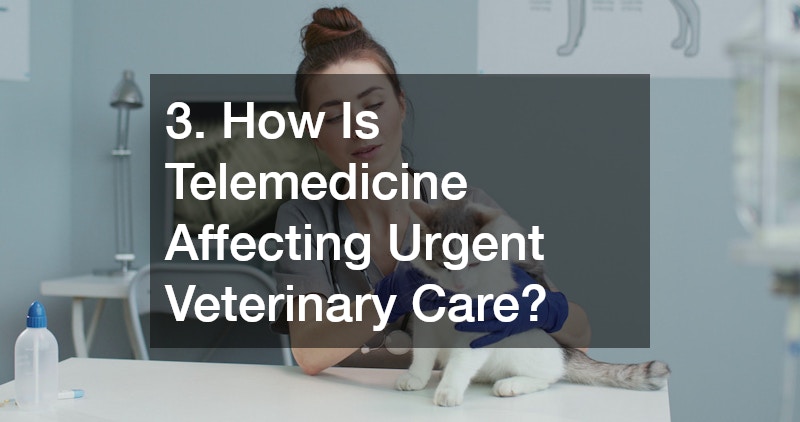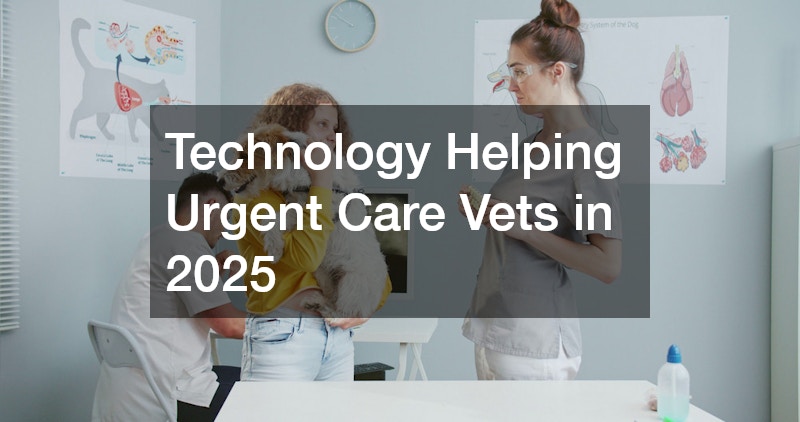In recent years, technology has been a transformative force across industries, and urgent veterinary care is no exception. By 2025, technological innovations are poised to fundamentally reshape how urgent care vets diagnose, treat, and monitor animal health, ultimately enhancing their ability to provide timely and effective care.
1. How is Artificial Intelligence Being Used in Veterinary Diagnostics?
1.1 AI-Enabled Diagnostic Tools
The integration of AI in diagnostic tools enables urgent care vets to obtain rapid and highly accurate diagnoses, reducing the waiting period that often accompanies traditional laboratory results. These AI-enhanced tools use vast datasets to identify patterns and anomalies, ensuring that even subtle signs of illness can be detected early.
In urgent care settings, the speed of AI diagnostic tools can be life-saving, allowing vets to initiate treatment protocols faster. For example, AI software can swiftly analyze medical imaging such as radiographs and ultrasounds, providing critical insights that guide immediate therapeutic actions.
Moreover, as these tools continue to evolve, they are becoming more accessible, making advanced diagnostic capabilities available to a wider network of veterinary practices, thereby improving overall patient outcomes. The increased accuracy offered by AI significantly decreases the chances of misdiagnosis, which is crucial in time-sensitive urgent care environments.
1.2 Machine Learning in Veterinary Practice
Machine learning is empowering practitioners by enabling predictive modeling, which anticipates health issues before they manifest clinically. These algorithms sift through complex datasets to identify precursors to diseases, allowing for proactive health management strategies for patients.
In addition to diagnostics, machine learning is optimizing treatment recommendations by analyzing historical case data to suggest effective solutions tailored to individual animals’ profiles. This personalized approach minimizes the guesswork often involved in clinical decision-making.
Ultimately, the ability of machine learning to continually improve through data analysis ensures that veterinary practices can deliver cutting-edge care, contributing to the growing field of personalized veterinary medicine that benefits both practitioners and pet owners alike.
2. What Role Do Wearable Devices Play in Monitoring Animal Health?
2.1 Real-Time Health Monitoring
The introduction of wearable technology in veterinary care has significantly enhanced real-time monitoring capabilities. These devices, often attached to collars or embedded in harnesses, can track vital signs such as heart rate, temperature, and activity levels remotely.
This real-time monitoring provides urgent care vets with continuous insights into an animal’s health, enabling them to detect abnormalities that might require urgent intervention. Wearable technology is especially valuable for managing chronic conditions where slight fluctuations can indicate potential issues.
Not only do they help in immediate assessment, but wearables also alleviate the stress of hospital visits for animals by permitting the collection of data in the comfort of the pet’s home environment. The non-invasive nature of these devices ensures minimal disruption to pets’ lives while maintaining a high standard of care.
2.2 Data Analysis for Preventive Care
The data collected from wearable devices is a goldmine for preventive care strategies. By analyzing this information, veterinarians can identify trends and patterns that might otherwise go unnoticed, such as a gradual decline in activity that facilitates early intervention.
Such proactive measures reduce the incidence of emergencies, promoting a shift from reactive to preventive care in the veterinary field. Pet owners, too, benefit from insights provided by these devices, becoming more engaged in their animals’ healthcare decisions.
The collaborative effort between urgent care vets and pet owners, guided by detailed data analysis, paves the way for customized care plans that address individual animal health needs more effectively. Leveraging this data contributes to the broader vision of improving the quality and longevity of animal lives.
3. How Is Telemedicine Affecting Urgent Veterinary Care?
3.1 Virtual Consultations and Remote Assessment
Telemedicine is revolutionizing how urgent care vets deliver urgent care by facilitating virtual consultations, which can be particularly beneficial when immediate physical appointments are not an option. This technology allows veterinarians to assess an animal’s condition remotely through video calls and digital messaging.
With the ability to guide afar, telemedicine reduces the pressure on in-clinic appointments while ensuring pets still receive necessary care. For pet owners in rural or underserved areas, these online consultations make expert veterinary advice more accessible than ever before.
The convenience of telemedicine also empowers pet owners, giving them the tools to connect with veterinarians at their fingertips, thereby enhancing care for pets that require round-the-clock attention or observation. This digital transformation is building a bridge between veterinarians and pet parents, fostering a responsive healthcare environment.
3.2 Expanded Access to Specialist Care
Telemedicine not only connects pet owners with local urgent care vets but also expands access to specialized veterinary care. Through virtual networks, veterinary specialists who might be located far away can collaborate with local vets to provide advanced insights into complex cases.
Specialist consultations via telemedicine improve case outcomes by providing comprehensive evaluations without the barriers of travel and geographical limitations. This expanded access equips primary care vets with the guidance needed to handle specialized cases efficiently.
As urgent care cases may require swift specialist intervention, telemedicine ensures no time is lost in arranging expertise, thus enhancing the overall efficacy of veterinary care delivery. The advent of telemedicine reduces bottlenecks in accessing specialized care, allowing for more efficient management of urgent and complex veterinary cases.


